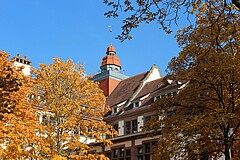Even though there are high amounts of visual input in almost all domains of our lives (school, workplace, leisure time), the potential of the school subject Arts and Crafts for "Content and Language Integrated Learning"-classrooms has not been fully recognized and hence not been fully exploited in a productive way.
Following an invitation of the Institute for Foreign Languages Professor Yasuko Fujii (Oita University/Japan) and Professor Atsushi Sumi (Toyama University/Japan) will come to Heidelberg University of Education to take part in the symposium "Arts and Crafts in the CLIL Classroom". This talk shows various ways of how Arts and Crafts can support foreign language learning and presents some linguistic results from CLIL classrooms. The participants also discuss some reasons from the field of the current educational policy which promote the integration of Arts and Crafts into the CLIL context.
The event will take place on Wednesday, 4th December 2019 from 4.15 to 6.45 p.m. The symposium venue is room 122 (Keplerstraße 87, 69120 Heidelberg/Germany). Your contact partner at HUoE is Professor Dr. Jutta Rymarczyk.
Abstract
- Professor Yasuko Fujii (Oita University/Japan)
"Developing Arts and Crafts Teaching Introducing Basic English: Expression based on art work appreciation"
This presentation introduces a study which scrutinized the use of illustrations and visual images which are considered to effectively support language learning. We tried to find learning contents and methods for fostering both, creativity and English language competence, through art and crafts in a CLIL classroom. - Professor Atsushi Sumi (Toyama University/Japan)
"Multicultural symbiosis in art education – How children recognize different colors of the sun in their drawings"
This talk tries to identify the reason why most Japanese children draw the sun red. Possible reasons like language, national flag, and weather have never led to a clear answer. Finally, a picture book by Munari was focused on as it offered a tentative conclusion saying that Japanese children have a culture of drawing the sun red. – The color of the sun in a children’s drawing may not be considered such a big problem. However, postings such as "I was bullied because I drew a yellow sun" make us acknowledge the fact that cultural friction is occurring within Japanese classrooms in times of increasing international exchange. As a conclusion we propose that art education should include the topic of multicultural symbiosis, acknowledging the difference in drawing expression.


